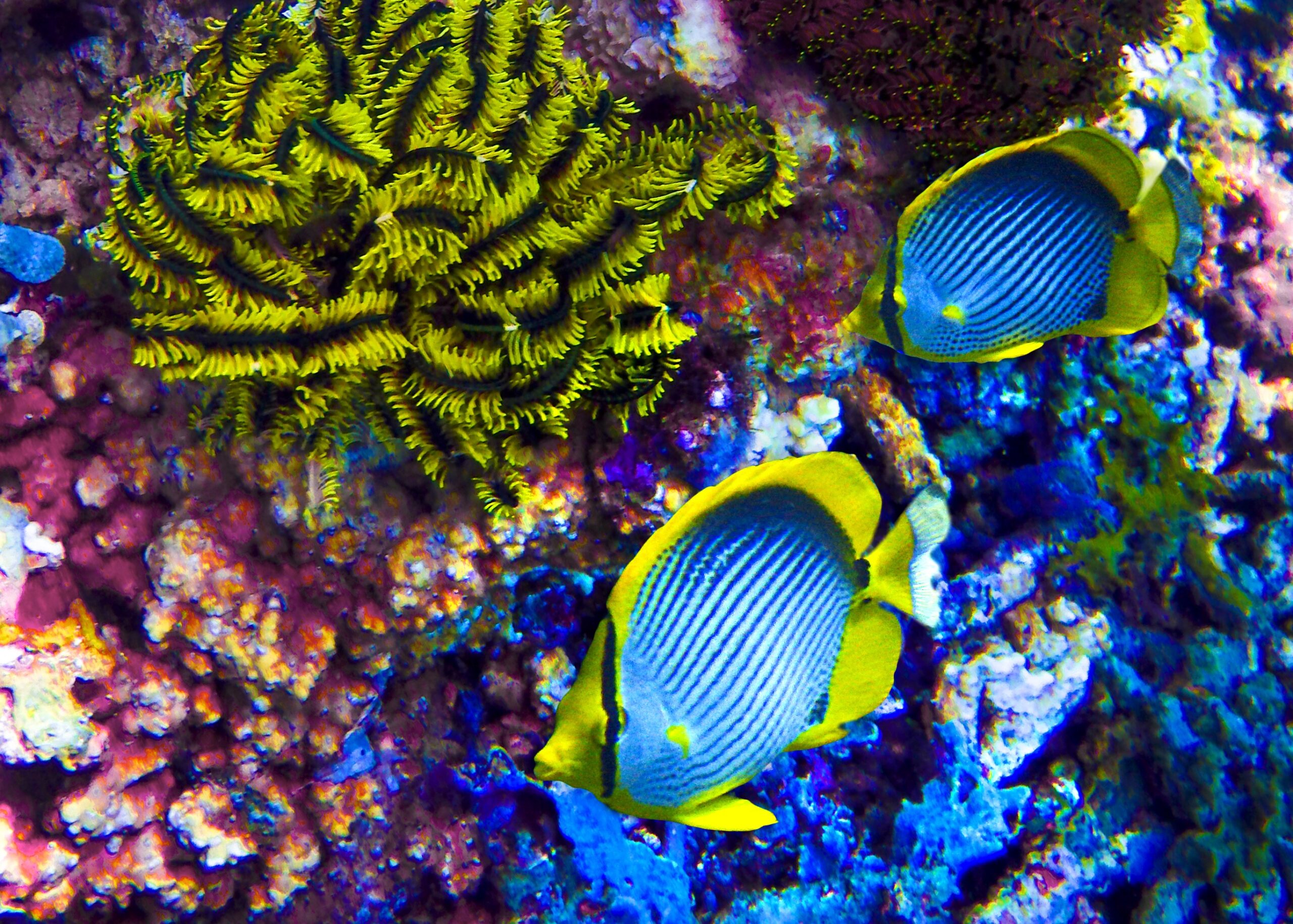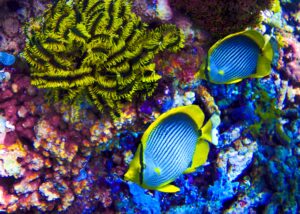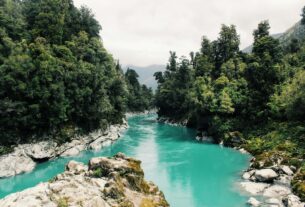The vast and enigmatic world of marine ecosystems encompasses some of the most diverse and complex environments on Earth. Stretching from the sunlit surface waters to the darkest depths of the ocean, these ecosystems are teeming with life forms adapted to a wide range of conditions. The intricate web of interactions between species and their habitats forms a delicate balance that sustains the health and productivity of the oceans. Marine ecosystems are not only vital for the immense biodiversity they support but also for the crucial services they provide, including oxygen production, climate regulation, and nutrient cycling.
Yet, the dynamic equilibrium of these marine environments is increasingly under threat from human activities. Overfishing, pollution, and climate change are disrupting the delicate balance, leading to significant ecological consequences. To effectively address these challenges, it is essential to delve into the complex interactions within marine ecosystems, understanding the roles of various organisms, their relationships, and the impact of environmental changes. This exploration not only deepens our appreciation of the ocean’s rich biodiversity but also underscores the urgent need for comprehensive conservation strategies to preserve these vital systems for future generations.
(pxhere.com)
The Layers of Marine Ecosystems
Marine ecosystems are stratified into distinct zones based on depth, light availability, and pressure, each supporting unique ecological processes and specialized organisms. Understanding these layers is crucial for appreciating the complexity and diversity of oceanic life.
Epipelagic Zone (Sunlight Zone)
The epipelagic zone, also known as the sunlight zone, extends from the ocean surface to about 200 meters deep. This layer is characterized by abundant sunlight, making it the most biologically productive part of the ocean. The presence of light supports the growth of phytoplankton, which are microscopic plants that form the base of the marine food web. Phytoplankton undergo photosynthesis, converting sunlight into energy and producing oxygen, which is essential for most marine life. This zone is also home to diverse habitats such as coral reefs and kelp forests. Coral reefs, often referred to as the “rainforests of the sea,” provide complex structures that offer shelter and breeding grounds for numerous marine species. Similarly, kelp forests support a variety of organisms by offering food and protection.
In addition to its productivity, the epipelagic zone is crucial for supporting larger marine organisms. Species such as fish, mammals, and invertebrates are commonly found here due to the availability of light and food. The high biodiversity in this zone contributes to the overall health of marine ecosystems, as these organisms play essential roles in nutrient cycling, predation, and competition. For instance, predators like sharks and large fish help regulate populations of smaller species, maintaining ecological balance. The dynamic interactions within the epipelagic zone highlight its significance in sustaining oceanic life and supporting global marine biodiversity.
Mesopelagic Zone (Twilight Zone)
The mesopelagic zone, or twilight zone, ranges from 200 to 1000 meters deep and is characterized by diminishing light levels. The sunlight that reaches this depth is insufficient for photosynthesis, leading to a significant decrease in primary productivity compared to the epipelagic zone. As a result, organisms in this layer have adapted to low-light conditions through various means. Bioluminescence—the production of light by living organisms—is a common adaptation in the mesopelagic zone. Many species, including certain types of squid and fish, use bioluminescence for purposes such as attracting prey, communicating with mates, and camouflaging against predators.
Despite the reduced light, the mesopelagic zone is rich in life forms that have evolved unique adaptations to survive in this environment. For example, species like the lanternfish possess light-producing organs that help them navigate and hunt in the darkness. The scarcity of food in this zone means that many organisms rely on detritus—organic matter that falls from the upper layers—as their primary food source. The twilight zone plays a crucial role in the marine food web, serving as a transitional zone where energy and nutrients are transferred between the productive surface waters and the deeper, less productive regions of the ocean.
Bathypelagic Zone (Midnight Zone)
The bathypelagic zone, extending from 1000 to 4000 meters deep, is characterized by complete darkness and extreme pressure. This layer is known as the midnight zone because no natural light penetrates to this depth. The absence of light creates a cold and high-pressure environment that poses significant challenges for survival. Organisms in the bathypelagic zone have evolved a range of adaptations to cope with these harsh conditions. For example, many species possess large, sensitive eyes or enhanced sensory organs to detect bioluminescent signals and find prey. The giant squid, anglerfish, and various types of deep-sea fish are among the notable residents of this zone, each exhibiting unique adaptations for navigating the dark depths.
The bathypelagic zone is also characterized by low levels of food availability. Most organisms in this zone rely on detritus—organic material that drifts down from the upper layers of the ocean—as their primary food source. Some species have developed specialized feeding mechanisms to capture and consume this scarce resource. The extreme conditions of the bathypelagic zone make it a challenging environment for scientific exploration, yet its inhabitants offer valuable insights into the adaptability of life in extreme conditions. Understanding this zone helps scientists better comprehend the complexities of deep-sea ecosystems and the resilience of life in one of Earth’s most remote environments.
Abyssopelagic Zone (Abyssal Zone) and Hadal Zone
The abyssopelagic zone, stretching from 4000 meters to the ocean floor, and the hadal zone, found in deep ocean trenches, represent the most extreme environments in the ocean. These areas are characterized by frigid temperatures, immense pressure, and complete darkness. Despite the harsh conditions, life persists in these depths. Unique species such as abyssal Cusk eels and deep-sea corals are adapted to the extreme environment of the abyssal zone. These organisms have developed specialized physiological and anatomical features to survive in the high-pressure conditions and low temperatures.
In the hadal zone, found in the deepest parts of the ocean, such as trenches and deep-sea vents, life forms are even more specialized. The hadal snailfish and various types of bacteria that thrive in these regions exhibit remarkable adaptations to endure the intense pressures and cold temperatures. The hadal zone also supports unique ecosystems around hydrothermal vents, where life is sustained by chemosynthesis rather than photosynthesis. These deep-sea ecosystems provide valuable insights into the resilience of life and the potential for similar habitats in extraterrestrial environments. Understanding these extreme environments is crucial for advancing our knowledge of marine biology and the limits of life on Earth.
Interconnections and Food Webs
(Phytoplankton and Zooplankton: The Foundation of Marine Food Webs)
Marine ecosystems are characterized by intricate food webs and dynamic interactions that sustain the diverse array of life found in the ocean. At the base of these food webs are phytoplankton, microscopic organisms that perform photosynthesis, converting sunlight into chemical energy. Phytoplankton are the primary producers in marine environments, generating organic matter that forms the foundation of the marine food web. This primary production supports a vast array of marine life, from the smallest zooplankton to the largest marine mammals. Phytoplankton are consumed by zooplankton, small drifting animals that play a crucial role in transferring energy up the food chain. Zooplankton, in turn, are preyed upon by small fish, krill, and other marine organisms, which are essential food sources for larger predators.
The abundance of phytoplankton and zooplankton impacts the entire marine ecosystem. These organisms contribute significantly to the ocean’s carbon cycle by absorbing carbon dioxide during photosynthesis and subsequently transferring it through the food web. The productivity of phytoplankton can fluctuate with environmental conditions such as nutrient availability and water temperature, influencing the distribution and abundance of zooplankton and the species that feed on them. Thus, the health and dynamics of marine food webs are closely linked to the activity and population of these foundational organisms.
(Predators and Apex Predators: Regulating Marine Ecosystems)
As one moves up the food chain, the complexity of interactions increases. Larger fish, such as tuna and sardines, feed on smaller zooplankton and invertebrates. These fish are then preyed upon by even larger predators, including sharks, whales, and seabirds. Apex predators, like sharks and large predatory fish, play a critical role in regulating the populations of mid-level predators and herbivores. By controlling the numbers of these species, apex predators help maintain the balance of marine ecosystems and prevent any single species from becoming overly dominant.
The presence or absence of apex predators can have cascading effects throughout the food web. For example, the decline of shark populations can lead to overpopulation of mid-level predators, which may then reduce the abundance of herbivores. This imbalance can result in overgrazing of primary producers like seaweeds and phytoplankton, disrupting the entire ecosystem. Understanding these predator-prey dynamics is essential for effective marine conservation, as preserving apex predators helps maintain the stability and health of oceanic ecosystems.
(Keystone Species: Influencing Ecosystem Health)
Predator-prey relationships and competition are fundamental in shaping the structure and dynamics of marine communities. The interactions between predators and their prey influence the abundance and behavior of species throughout the food web. For example, apex predators such as sharks exert top-down control by regulating the populations of mid-level predators and herbivores. This control prevents overgrazing and helps sustain the productivity of primary producers, such as phytoplankton and seaweeds. This dynamic interplay highlights the importance of preserving predator species to ensure the continued health and balance of marine ecosystems.
Keystone species are another critical component of marine ecosystems. These species have a disproportionately large impact on their environment relative to their abundance. A notable example is the sea otter, which plays a vital role in kelp forest ecosystems. Sea otters help control the population of sea urchins, which are herbivores that graze on kelp. Without sea otters, sea urchin populations can explode, leading to overgrazing and the destruction of kelp forests. The loss of these forests would have cascading effects on the entire marine community, demonstrating the crucial role of keystone species in maintaining ecological balance and health.
(Competition in Marine Ecosystems: Shaping Species Interactions)
Competition among species also plays a significant role in shaping marine food webs. In environments where resources are limited, such as coral reefs and deep-sea habitats, species often compete for food, space, and other resources. This competition can drive evolutionary adaptations, such as specialized feeding strategies or changes in behavior to reduce competition. For instance, in nutrient-poor waters, some species have evolved to exploit specific types of food or habitats, while others may use strategies like temporal or spatial partitioning to coexist with competitors.
The effects of competition extend beyond individual species, influencing community structure and ecosystem functioning. In coral reefs, for example, competition among different coral species and between corals and algae can determine the overall composition and health of the reef ecosystem. Understanding these competitive interactions is essential for managing marine environments and conserving biodiversity. By recognizing how competition shapes species distributions and community dynamics, we can better address the challenges facing marine ecosystems and work towards sustainable solutions.
Human Impact and Conservation
(Human Activities and Their Effects on Marine Ecosystems)
Human activities have a profound impact on marine ecosystems, leading to significant changes in their structure and functioning. Overfishing is one of the most critical issues, as it depletes fish stocks and disrupts food webs. Unsustainable fishing practices not only reduce the populations of target species but also affect the predators and prey that rely on them. This can lead to the collapse of entire fish populations and disrupt the balance of marine ecosystems. Furthermore, pollution from plastics and chemicals poses severe threats to marine life. Plastics can entangle marine animals, be ingested, and accumulate in the food chain, leading to health problems and fatalities. Chemical pollutants, such as heavy metals and pesticides, can poison marine organisms and degrade water quality, further stressing marine environments.
Climate change exacerbates these issues by causing ocean acidification, which impacts marine organisms with calcium carbonate shells and skeletons, such as corals and shellfish. Increased levels of carbon dioxide in the atmosphere lead to more acidic ocean waters, weakening these structures and disrupting marine ecosystems. Additionally, rising sea temperatures contribute to coral bleaching events, where stressed corals expel the symbiotic algae living within their tissues, leading to the loss of color and essential nutrients. Coral reefs, which are among the most diverse and productive ecosystems, are particularly vulnerable to these temperature changes, resulting in the degradation of habitats that support countless marine species.
(Conservation Efforts to Protect Marine Ecosystems)
Addressing these challenges requires robust conservation efforts to preserve marine ecosystems and their biodiversity. Marine Protected Areas (MPAs) are crucial tools in this regard, as they are designated regions where human activities are regulated or restricted to protect critical habitats and species. MPAs provide safe havens for marine life to recover and thrive, helping to rebuild fish populations, protect vulnerable species, and maintain ecosystem functions. The establishment of MPAs is supported by scientific research and monitoring, which helps identify key areas for protection and assesses the effectiveness of these areas over time.
Sustainable fishing practices are another essential component of marine conservation. These practices involve managing fish stocks to ensure they are harvested at sustainable levels, minimizing bycatch, and using fishing methods that reduce environmental impact. Pollution reduction efforts focus on minimizing waste, improving waste management, and reducing the use of harmful chemicals. Effective climate action is also critical, as it involves reducing greenhouse gas emissions, promoting renewable energy, and implementing strategies to mitigate the effects of climate change on marine ecosystems. Research and monitoring are vital for understanding ecosystem dynamics and informing management strategies. By studying marine ecosystems, scientists can identify trends, assess the impact of human activities, and develop effective policies and conservation measures.
In summary, while human activities pose significant threats to marine ecosystems, concerted conservation efforts offer hope for mitigating these impacts. Through the establishment of MPAs, sustainable fishing practices, pollution reduction, climate action, and ongoing research, we can work towards preserving the health and biodiversity of our oceans. The success of these efforts relies on global cooperation and commitment to safeguarding marine environments for future generations.
Conclusion,
In conclusion, marine ecosystems represent a breathtaking tapestry of life, intricately woven together by complex interactions and interdependencies. From the vibrant coral reefs and kelp forests of the epipelagic zone to the mysterious depths of the abyssopelagic and hadal zones, each layer of the ocean supports unique forms of life and ecological processes. The delicate balance of these ecosystems is maintained through intricate food webs, predator-prey dynamics, and the vital roles played by keystone species.
However, the impact of human activities—such as overfishing, pollution, and climate change—poses significant threats to the health and stability of marine ecosystems. Addressing these challenges requires a multifaceted approach, including the establishment of Marine Protected Areas, the adoption of sustainable fishing practices, and concerted efforts to reduce pollution and mitigate climate change. By investing in research and conservation, we can enhance our understanding of marine ecosystems and develop effective strategies to safeguard their future. Protecting these vital oceanic systems is not only crucial for maintaining biodiversity but also for preserving the essential services they provide, which are fundamental to life on Earth. As stewards of the planet, it is our responsibility to ensure that marine ecosystems continue to thrive and sustain the rich tapestry of life they support.




